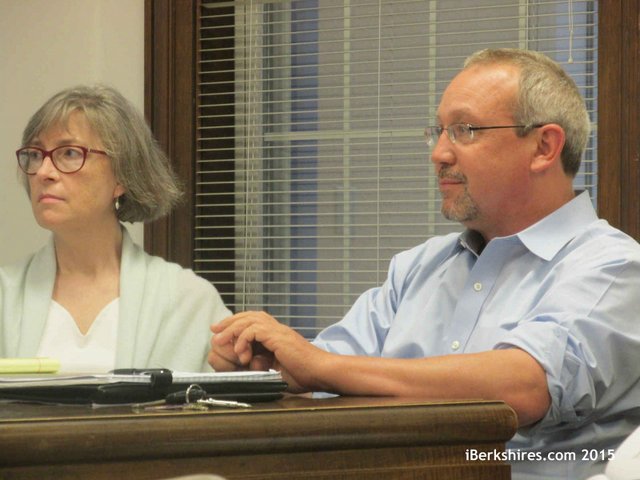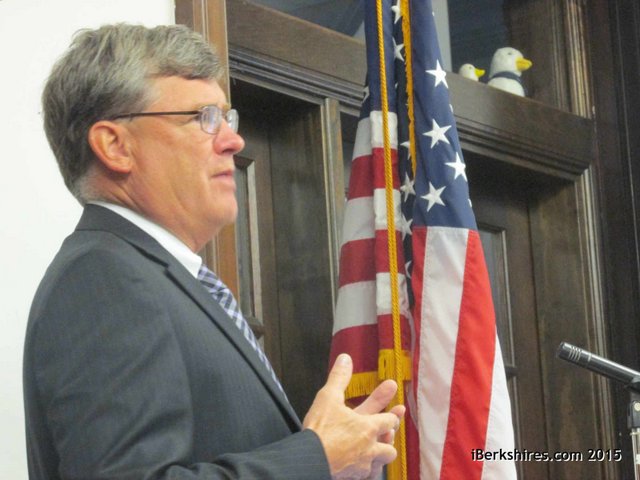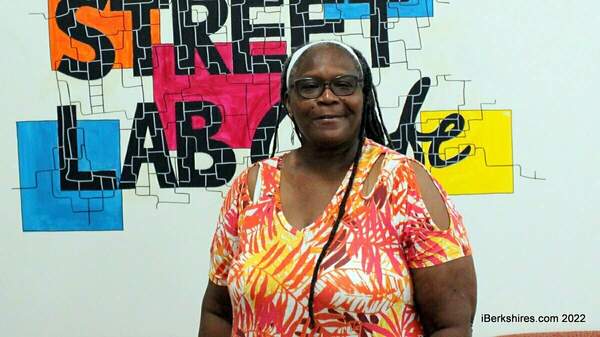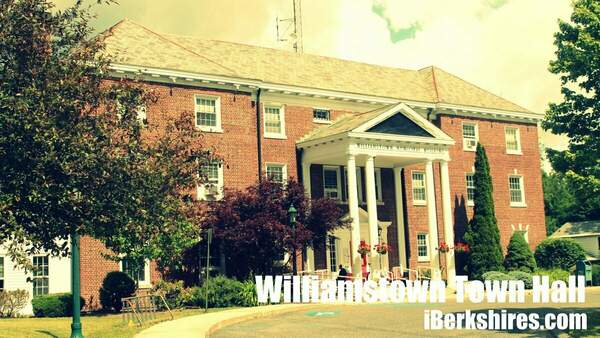Vermont Hospital Official Says Jobs Key to Development
 Economic Development Committee Chairman Jeffrey Thomas and Vice Chairwoman Karen Lartin at Monday's meeting. Economic Development Committee Chairman Jeffrey Thomas and Vice Chairwoman Karen Lartin at Monday's meeting. |
WILLIAMSTOWN, Mass. — The chief financial officer of Southwestern Vermont Medical Center told the town's Economic Development Committee that without an infusion of new jobs, nothing will develop in the region.
"One of the challenges of recruiting in this market ... we've lost four good physicians in trying to recruit them ... is there was no work for the spouse," Southwestern Vermont CFO and Williamstown resident Stephen Majetich said on Monday night.
"We've got to figure a way in Northern Berkshire and Southern Vermont to get some jobs for the spouses. My son is graduating from Mount Greylock. Now my wife wants to re-enter the work force. She's an accountant ... but there's nothing for her to do."
The EDC invited Majetich as the latest in a series of experts to share their professional perspective.
"If you ask me what Williamstown and Vermont and Northern Berkshire needs to do ... we've got to figure out a way to get jobs," he said. "I'm not talking about large employers. You have to start with onesies and twosies. And they have to be good jobs. We need to figure out a way to pull jobs in.
"They need to be decent jobs. They don't need to be $300,000 a year, but they need to be decent jobs."
Going back to the Bennington hospital's experience recruiting physicians, Majetich said there are other barriers to keep in mind — specifically in Williamstown.
"We had an anesthesiologist we recruited and I really pushed Williamstown because he had young kids," Majetich said. "He came down to Williamstown and had a hard time finding housing for his family. Finally, he found a house. ... The deal fell through and he went back to Philadelphia.
"The kids were at [Williamstown Elementary School] and loved it, but it just didn't work out. ... And his wife couldn't find a job. Again, it comes back to jobs."
Majetich noted that education is a selling point for attracting people to move to Williamstown, but it is far from a slam dunk because of the condition of Mount Greylock Regional School, an oversized and outdated junior-senior high school.
He told the story of his first visit to Mount Greylock five years ago when he was being recruited to SVMC.
"If you're a narrow-minded fiscal guy like me ... you'd walk into Mount Greylock and be as short-sighted as I was and say, 'There's no way I'm sending my kid here,' " Majetich said. "That job in East Hartford was looking a lot better."
In fact, Majetich said, he told a recruiter he was working with that he would not take the job at Southwestern Vermont — until he heard from his son.
"My son, who was in the eighth grade, said, 'Dad, a school is not a building. It's the people in the building,' " Majetich said.
But the condition of the school building can turn off potential residents, he said.
So can local attitudes.
"Williamstown is not a friendly place," Majetich said. "It is very partitioned. The anesthesiologist who left also told me that. It's not as friendly as it could be.
 Stephen Majetich of Southwestern Vermont Medical Center addresses Williamstown's Economic Development Committee. Stephen Majetich of Southwestern Vermont Medical Center addresses Williamstown's Economic Development Committee. |
"There's a college partition. I believe there's a group of longtime local [residents] partition. Then I think there's everybody else.
"I also think the town doesn't always think of the residents. I think they think, 'We have to do this ... because the college wants it,' or, 'We have to do this because an employer in town wants it.' My Lee Terrace episode is a great example of that."
On a positive note, EDC Chairman Jeffrey Thomas asked Majetich to talk about a new primary care facility that Southwestern Vermont is building in Pownal, Vt.
Majetich said the new facility is planned to initially have two full-time and one part-time caregiver, including one full-time and one part-time physician.
He said the facility will be able to serve between 1,500 and 2,000 patients on its "panel."
"Our panel is going to fill up because ... we do know there's a big void in Williamstown and North Adams," Thomas said. "I think the line will be drawn at the blinking light in South Williamstown. My sense is people in South Williamstown probably turn south."
In other business on Monday, the committee agreed to review a progress report at its next meeting.
Thomas advocated for releasing the interim report as a way to keep the committee engaged with town residents.
"We've asked the community for its input," Thomas said. "We had more than 500 people respond to the survey. We had people come to the forums. We have an obligation to demonstrate that we're considering those ideas and also to share with them our progress and work to date.
"It will only further the engagement of the community and participation in our process. At the end of the day, we should strive to present to the Selectmen recommendations that are vetted by the community and fully supported by the community."
The EDC reviewed the summaries of the townwide survey responses that individual members of the committee compiled. Those summaries will be included in the progress report.
Tags: economic development, jobs,
 Economic Development Committee Chairman Jeffrey Thomas and Vice Chairwoman Karen Lartin at Monday's meeting.
Economic Development Committee Chairman Jeffrey Thomas and Vice Chairwoman Karen Lartin at Monday's meeting. Stephen Majetich of Southwestern Vermont Medical Center addresses Williamstown's Economic Development Committee.
Stephen Majetich of Southwestern Vermont Medical Center addresses Williamstown's Economic Development Committee.














